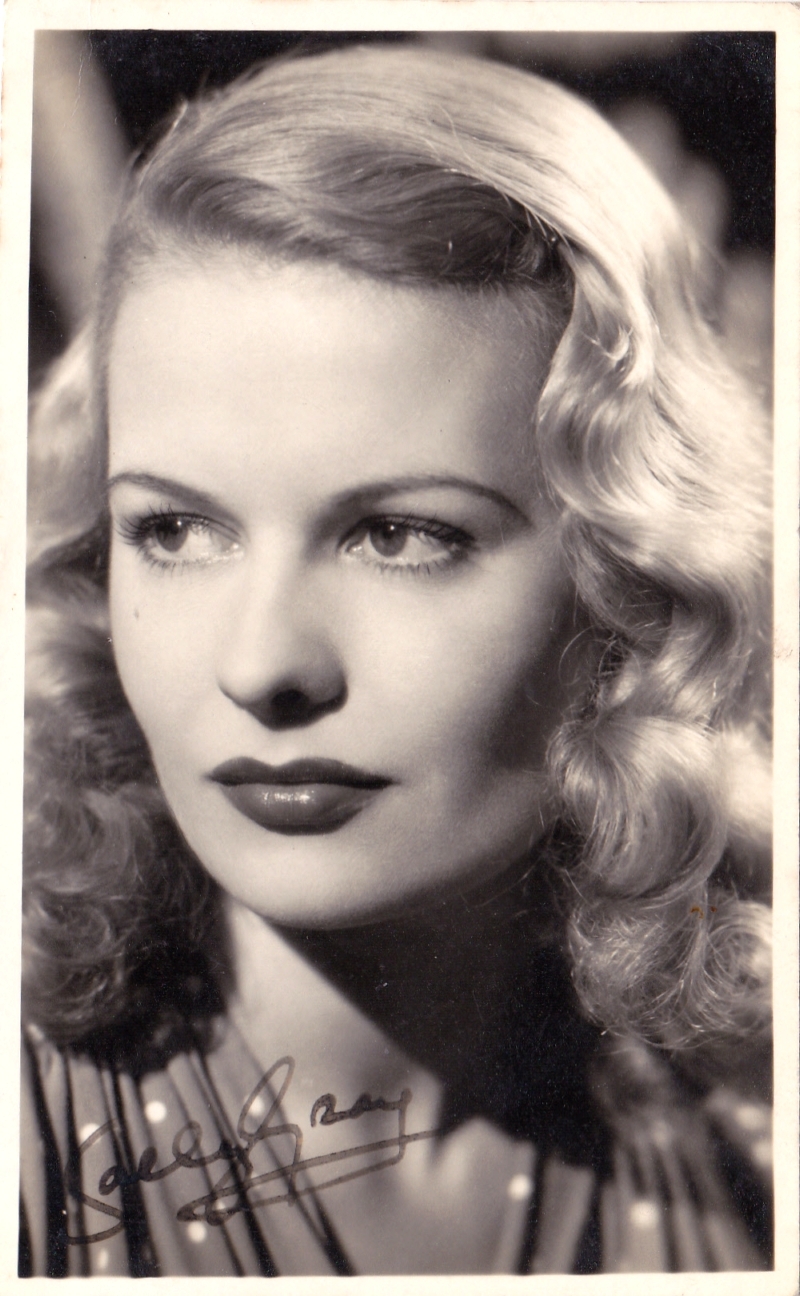In 1941, Sally Gray starred in Dangerous Moonlight, playing an American wartime reporter. Anton Walbrook was the male lead: a Polish pianist and fighter pilot, shell-shocked but ready to join the RAF. Sally’s costumes were created by Cecil Beaton and the music included the Warsaw Concerto, specially written for the film by Richard Addinsell. The mixture of wartime propaganda and romance did not meet with critical acclaim, but the film was a box-office success. Ten years later, Hollywood was offering a long-term contract. Henry Moore, the sculptor, was prepared to design textiles "as worn by Sally Gray “. But at this point she gave up acting
On 1st December 1951, she left her mother’s house in Rattle Road, Westham and headed to the register office in Hailsham. She and her fiancé were obviously keen to keep the matter quiet: it was not a celebrity wedding. Sally was married under her original name of Constance Vera Stevens and gave no occupation. Her age was stated as 33, which was a generous estimate: a truer figure would be a few years older than that. The witnesses at the wedding were Sally’s sister Ruby, who lived for some time in Rattle Road, and a gentleman called Lionel Gada. Her husband gave his name as Dominick Geoffrey Edward Browne, aged 50, a farmer. He was, however, better known as the Fourth Lord Oranmore and Browne.
The actress, in the best tradition of romantic cinema, was marrying an aristocrat. The marriage remained secret until the Coronation in 1953, when Sally – now Baroness Oranmore and Browne and wearing a tiara - spectacularly appeared at the Abbey with her husband. At the same time, The Times announced that the pair were married.
The romance was perhaps lessened by the fact that this was the lord’s third marriage. He had recently been married to Oonagh Guiness, but that had ended in 1950. Sally was reportedly cited as co-respondent in the divorce case.
With marriage, Sally gave up a film career which had begun in 1930. It had been lacklustre at first, but under the guidance of Stanley Lupino she became a major presence on the stage and screen. There were a couple of Saint films and appearances on the West End stage. There was also the film of The Lambeth Walk (1939). After Lupino died – leaving Sally a very large amount from his life insurance – she had a nervous breakdown. She reappeared, however, in the mid-1940’s and created a new role for herself as the husky-voiced heroine of earthbound melodramas and films noirs. These included Green for Danger (1946), They Made Me a Fugitive (1947) and Obsession (1949).
In the 1940’s her mother, Gertrude Stevens, arrived in Westham and stayed there for twenty years. Perhaps, as may have been the case with Peter Sellers in the Bay, the successful child bought the house. Two of Sally’s sisters moved in there at different points. Sally became a well-known figure in the village, and when she was staying there the local telegraph boy would be kept very busy.
Sally went on to live a private life in London’s west end. There was a time of sadness when her stepson, the Honourable Tara Browne, (Oonagh’s son) died in a car crash. His friend John Lennon included him in the Sergeant Pepper (1967) album’s lyrics (“nobody was really sure if he was from the House of Lords.”) But she lived an active life until her death in 2006
Alan Starr
Image: Publicity postcard from private collection.
